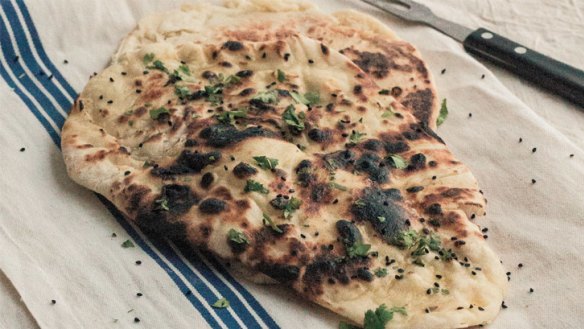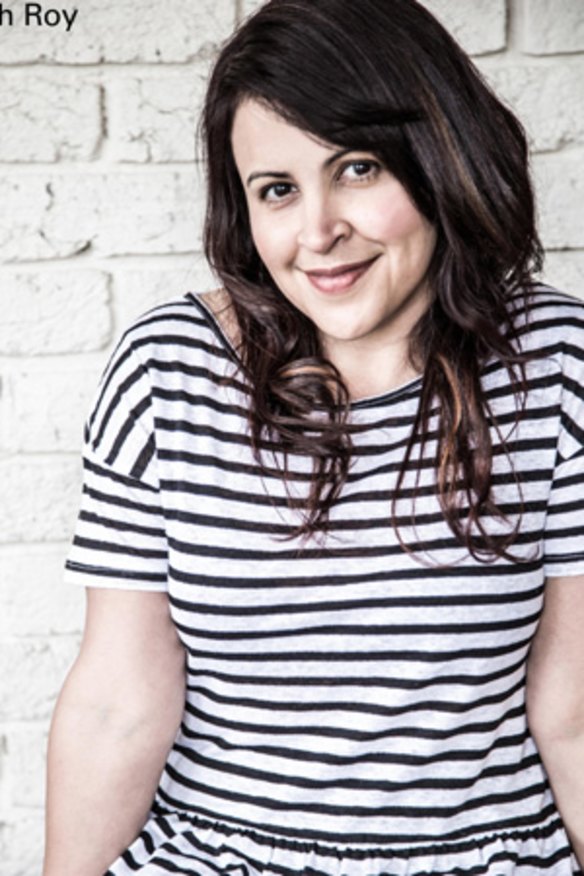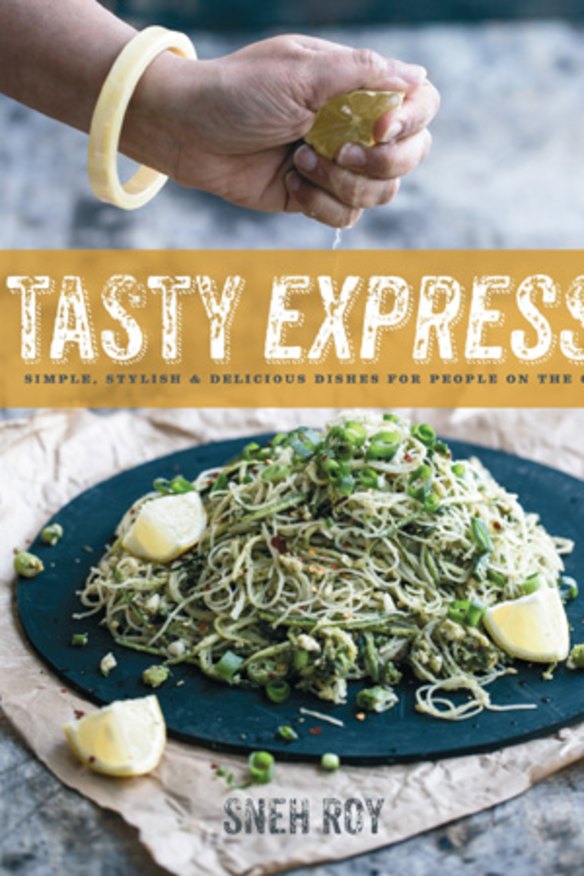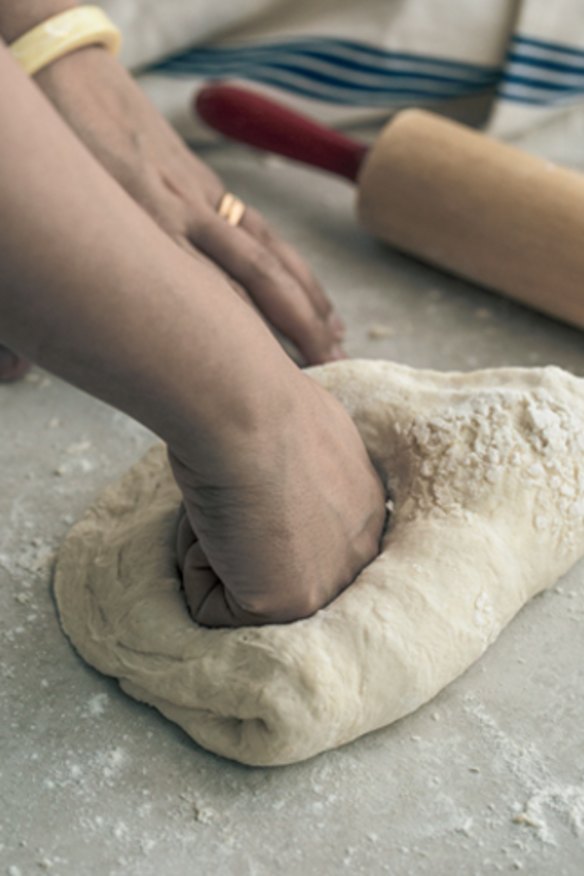How to make naan bread: Tips and a naan recipe from Sneh Roy
In India, naan is actually a rare-occassion treat rather than the ubiquitous accompaniment to curries recognised in the West. Blogger Sneh Roy gives her tips on making the perfect naan bread.

For many of us, the naan is ubiquitous in our usual Friday night Indian take-away orders. It's a standard on menus and chalkboards, a classic side in an abundance of forms – the dense cheese, the light garlic, the sweet and nutty Kashmiri – for which to scoop up the remaining smears of our chosen curry. Well, it seems we might've been had.
"The naan is actually not as widespread in India as people might believe," says Sneh Roy, the Indian-born, Sydney-based food columnist and award-winning blogger behind Cook Republic "It originates from northern India, where it's a central part of the cuisine in areas like Punjab and Kashmir. But if you go to eastern or southern India, it will be hard to find naan. It's actually the chapati or the roti that is more prevalent throughout India. From the rich to the underprivileged, roti is a part of every household; whereas naan is more of a specialty, reserved for special occasions."

Fortunately for us naan-obsessed, the distinction didn't stop Roy from including a recipe in her recent cookbook, Tasty Express ("I love naan; everyone loves naan!" she offers). Like many of the book's dishes, Roy's naan recipe is one borne out of both necessity and a personal interest in culinary fusion developed during her post-Mumbai years living in south-east Asia. Olive oil and Greek yoghurt replace hard to find traditional ingredients like ghee and dahi, and the tandoor – the clay oven used to make naan – makes way for your trusty cooktop.
First, though, patience is key. "Basically, it begins as a two-step process," says Roy. "You need to let the dough rise twice. If you're impatient and you do it just once, you're not going to get the puffiness and soft texture to it.
"The other thing is in the combination of yeast, baking powder, milk and yoghurt, which is very different from traditional bread-making. The yoghurt really makes the naan dense and soft, and the milk gives it its charred, crispy edges. If you don't use one of those ingredients, you won't get the right texture."

In lieu of a makeshift backyard tandoor drum (you may have seen it roadside in Delhi, but perhaps best not to try at home), Roy's recipe makes solid use of your stove-top and a simple pan.
"Not everyone has a tandoor at home [in India], which is perhaps why naan is not so prevalent. Do it in a pan on the cooktop," Roy advises. "You can use a traditional oven, but what happens in an oven is that it tends to go quite hard and crispy. Throw a few drops of water in the pan; it works like steam. Otherwise it will just crisp up like flatbread, but you want it to be soft and doughy and almost sponge-like in texture."
Thankfully for the home cook, Roy isn't averse to indulging in shortcuts for some necessary cosmetic flourishes. Before cooking, her recipe recommends rolling the naan into its signature teardrop shape.

"I'm actually not sure why we do that!" she says when asked about the significance. "Well, what happens in the dhabas in India is they don't really have all the equipment, so instead of rolling the dough they just stretch it with their hands. It's almost like a pizza chef twirling the pizza dough in the air; it gets this long, stretchy texture. And then when they put it in the tandoor, they suspend the naan from a long metal skewer and it kind of hangs, giving it its signature shape. Since you can't do all that at home, the best way to get that authentic look is to roll it into a teardrop shape."
And as for her secret ingredient? The answer's another creative substitute: your gas flame.
"To get that perfect charred look, the flame is super important," she says. "If you have a gas flame, that works brilliantly to finish it off to get that nice, crispy, bubbly charred bit on top. Add a lashing of butter on top and some nigella seeds; it just smells like naan and feels like naan."
Sneh Roy's naan recipe
1 teaspoon dry yeast
1 teaspoon caster sugar
2 cups (300g) plain flour
1/2 teaspoon baking powder
pinch of salt
1/2 cup (125ml) milk
1/2 cup (140g) Greek yoghurt
1 tablespoon olive oil
melted butter, to brush
nigella seeds, to sprinkle
1. Place the yeast, sugar and 1/4 cup (60ml) warm water into a small bowl. Set aside in a warm place for 10 minutes, until the mixture becomes frothy.
2. Combine the flour, baking powder and salt in a large bowl. Make a well in the centre. Add milk, yoghurt and yeast mixture to the well.
3. Mix gently with a wooden spoon until it starts coming together. Turn onto a flour-dusted surface and knead for a few minutes until smooth.
4. Return to the bowl. Cover with a clean tea towel and set in a warm corner of your kitchen for about 30 minutes to prove, until doubled in size.
5. Add the olive oil to the dough and knead in until smooth. Cover and set aside for another 30 minutes.
6. Divide the dough into four balls. Dust a clean surface with flour and roll a portion of dough into a teardrop shape. Stretch the shape gently with your fingers to get a rustic-looking naan that is less than 5mm thick.
7. Heat a heavy-bottomed frying pan with a lid on high heat. Brush one side of the naan with water. Place the naan, water side down, into the frying pan and cover with the lid. Cook until puffed bubbles appear on the top surface.
8. If you are cooking on a gas flame, using long tongs, hold the uncooked side over the flame to give an authentically charred result. Brush the charred side with butter and sprinkle with nigella seeds. If you are cooking on an electric stove, brush butter over the uncooked side and sprinkle with nigella seeds. Flip and cook in the pan until browned.
9. Brush this surface with butter, sprinkle with nigella seeds and flip it gently. Cook this side until slightly charred. Transfer the cooked naan to a plate. Repeat with the remaining dough.
Makes 4
This recipe is an edited extract from Tasty Express, by Sneh Roy, published by Random House, Ebury, $39.99.
The best recipes from Australia's leading chefs straight to your inbox.
Sign up